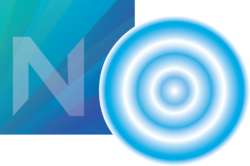 You shouldn’t prepare to be a librarian or curator with outdated tools, any more than you should study to be a doctor with a hacksaw and leaches. That’s why the University of Maine’s Digital Curation graduate program integrates cutting-edge software into its program. It’s also why its faculty chose an innovative tool that’s been called an email killer for their new learning environment–one that to our knowledge has never been used as courseware before.
You shouldn’t prepare to be a librarian or curator with outdated tools, any more than you should study to be a doctor with a hacksaw and leaches. That’s why the University of Maine’s Digital Curation graduate program integrates cutting-edge software into its program. It’s also why its faculty chose an innovative tool that’s been called an email killer for their new learning environment–one that to our knowledge has never been used as courseware before.
Training in real-world technologies
As a program that melds deep concepts of curation with hands-on practice, we regularly teach common digital curation tools, from Archivematica to Omeka. And we go further, inviting our students to share the pros and cons of software they already use in their own institutions as well as write carefully researched reviews of packages they had not used before. This results in an expanded knowledge base that can benefit future students as well.
Along with this broad variety of applications, our faculty decided we should give our students a stronger grasp of the single programming environment they would be most likely to encounter in the real world. That environment is PHP, taught in “Digital Collections and Exhibitions” (DIG 540).
PHP is the dominant language for running a website on a server. It powers 80 percent of the Web, including WhiteHouse.gov, Wikipedia, WordPress, and Facebook. Infoworld sums up PHP’s approach a “practical flexibility” that “tells a story of pragmatism over theory and problem solving over purity.”
Innovations in courseware
It can be hard to keep up with the latest tools of a profession that is changing as fast as curation in the Internet age. That’s why professors in UMaine’s program stress hands-on experience with the tech people are likely to use not just in today’s workplace, but also in tomorrow’s.
We’ve even chosen our learning management software to reflect technologies trending outside the classroom. Employers of our students won’t use education-oriented platforms like Blackboard or Moodle. Some industry observers predict they won’t even use email.
As noted in the New York Times, organizations of many kinds are increasingly abandoning traditional communication mechanisms like email, and turning instead to tools like Slack that facilitate real-time collaboration. Slack includes many of the features of more public social media like Twitter and Instagram, but in a private context that makes it easy to keep track of streaming conversations rather than, say, find documents posted to folders.
That’s the reason faculty member John Bell began integrating Slack into our online classes, and now Kendra Bird and Jon Ippolito have followed his lead. No one knows whether Slack will end up killing email off completely, but we can and should adapt our teaching methods to fit the technologies that are trending into the future.
For more information visit DigitalCuration.Maine.edu.

Why we chose @SlackHQ for #DigitalCuration RT @stillwaternet: Why train with yesterday’s tools for tomorrow’s jobs? http://t.co/Bv75OA2O8F
RT @stillwaternet: Why train with yesterday’s tools for tomorrow’s #DigitalCuration jobs? http://t.co/EHeFph7myE
RT @stillwaternet: Why train with yesterday’s tools for tomorrow’s #DigitalCuration jobs? http://t.co/EHeFph7myE
Somaya Langley liked this on Facebook.